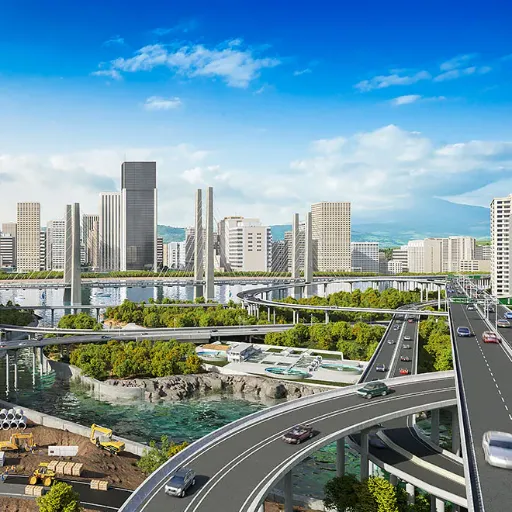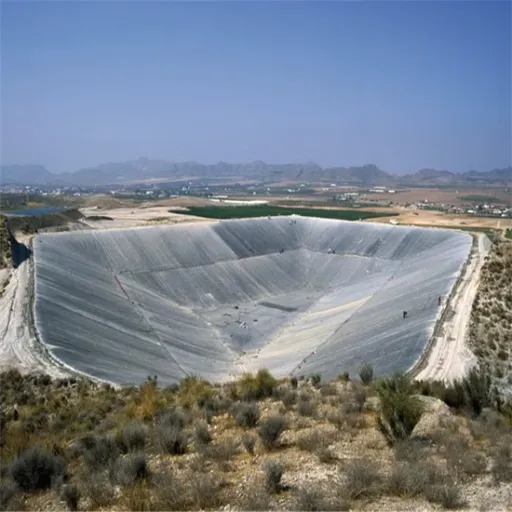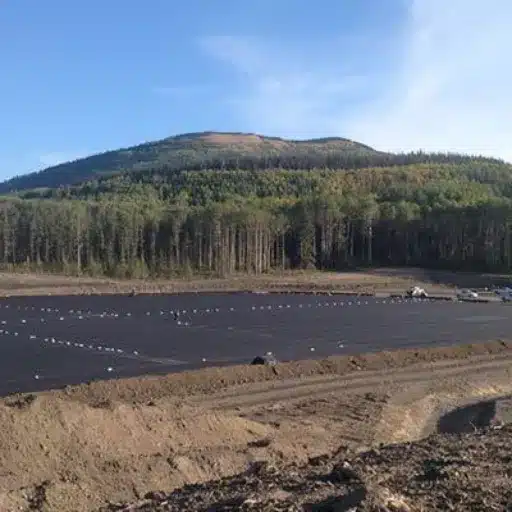The recasting of infrastructure relies on invention, precision, and sustainability where civil and environmental engineering maintain the social networks, transportation, and water in modern society. Along the same lines as the ‘off-automation’, it is based on introducing new advanced models that can change how we perceive and approach the construction and maintenance of these systems most efficiently. Do not miss to stay as we give further details and insights, such as engineering and the opportunities in the construction industry in a revolution, keeping the current smart world in mind while taking it to the next level in an improved, collaborated and eco-friendly reality.
Overview of Civil Infrastructure

Modern Society’s Foundations
From roads and railways to electricity and water supply systems, infrastructure features are the silent, often unseen, vital elements of every nation. There are two domains in infrastructure development which are hard infrastructure and soft infrastructure.
Hard Infrastructure
Physical infrastructure such as roads, railways, airports, water supply systems, power culture, and telecommunications.
Soft Infrastructure
Economic activities such as health care system, legal frameworks, social activities, and education networks.
Important Note: The Society of Civil Engineers in the U.S. mentioned in their 2021 report that the development in the U.S. country is outdated and needs intervention, and the federal government needs to handle the upcoming deficiencies. Also, previously built buildings and the shifts that happened need to be handled as the framework is quite vulnerable.
Constructive Technology Trends

The construction sector is transitioning to a new era fueled by a mix of digital technologies. There are tools adapted to change and drive efficiency, sustainability, and affordability. Building Information Modeling (BIM) and robotics, for example, fall on the cutting-edge of technology.
1
Building Information Modeling (BIM)
The technology has opened pathways to creation of detailed 3D models and digital structures of projects to be undertaken. A report from 2023 asserts that close to 70% of construction ventures are now digitally employing BIM to launch, plan, and boost and manage project developments.
Key Benefit: BIM is fundamentally a collaborative and cooperative approach utilized by engineers, contractors, and architects to maintain clear communications and assist in decision-making processes.
2
Automation in General
Automated machines are taking over many redundant and dangerous tasks in the construction sector, including but not limited to concrete mixing, brick laying, and demolition. An excellent example is the brick laying robots which can lay a series of 1000 immensely craftsman-crafted bricks per hour, a rate far surpassing human capability.
Market Projection: The 2028 global construction robotics market is predicted to reach $9.4 billion and expand by 15.3% Compound Annual Growth Rate (CAGR).
Benefits: Accelerated project delivery and solving labor shortages.
3
Advanced Materials
The sector is revolutionized by the introduction of new types of materials, most notably self-healing and carbon or graphene strengthened composites, as well as 3D printed components. The self-healing concrete, for example, can double its life due to its self-repairing mechanism, cutting the lifetime cost.
Impact: Climate resilience can be optimized and carbon and structural resilience ensured by the deployment of these materials, according to multiple studies.
Transportation Engineering and Smart Systems

The technological change has equally hit the transportation industry. With the adoption and full implementation of smart systems that incorporate advanced tools, innovation has become the key driver of development in transportation engineering.
Intelligent Transportation Systems (ITS)
ITS features smart systems and road structures equipped with enhanced sensors, communication networks, and real-time monitoring that effectively enhance road safety through data analytics.
Traffic Efficiency
30%
Improvement in city travel rates (Stockholm & Singapore)
Emission Reduction
20%
Cut in emissions by 2030 (US Dept. of Transportation)
Sustainability Efforts in Civil Infrastructure

The efficiency of the civil infrastructure lies in the implementation of eco-friendly and environmental friendly helpful materials. Additionally, the utilization of resources efficiently is another factor in sustainability. Furthermore, it’s imperative to have a focus on energy-efficient and environmentally friendly and advanced engineering systems and designs, as they are pivotal in the creation of environmentally-friendly and resilient infrastructure systems.
Green Building Design Methods
Key Statistic:
According to the U.S. Green Building Council (USGBC), 39% of carbon emissions in the U.S come from buildings.
Energy-Efficient Materials
Low emissivity (Low-E) windows can reduce up to 50% of heat lost.
Natural Solutions
Green roofs and vertical vegetation provide natural insulation and reduce urban heat island effects.
Solar Energy
Photovoltaic panels reduce the necessity for nonrenewable energy sources.
LEED Certification Benefits
25%
Less energy consumption
34%
Lower carbon footprint
The Use of Clean Technology in Infrastructure Projects
In terms of fighting global warming, one of the most useful actions is the implementation of clean energy in infrastructure projects. In the most recent years, the technology of solar, wind, and geothermal has enabled the use of renewable to be applied in a manner that is environmentally friendly, reduces carbon dioxide, is cost effective, and has large potential for growth.
Global Solar Energy Milestone
By 2023, global solar energy capacity has surpassed 1 terawatt, and the energy is continuing to accelerate adoption from a larger adoption scope.
- Rooftop Solar: Installation of solar panels in rooftops can meet 50% of energy needs of businesses
- Wind Power: Building wind turbines in infrastructure projects in rural areas can generate significant surplus power to local grids
- Energy Storage: Lithium-ion batteries and other energy storage solutions solve intermittency problems and enhance system reliability
Strategic Approaches to Urban Planning in Terms of Infrastructure Development

To have a new approach to urban planning strategies in infrastructure development, the focus should be on compliance with sustainability, removal of fossil fuel use, and reduction of all levels of energy wastage within infrastructure and the city. This includes promoting low carbon transport, better methods of waste disposal, and solar-powered energy creation for a greener environment.
Analyzing the Need for Urban Infrastructure
Global Urban Population
4.4B
people (56% of global population)
Economic Impact of Urban Congestion
$1 trillion in annual losses due to congestion and transportation inefficiencies (McKinsey City, 2021-2022)
Investment in Efficient Urban Public Transit
Investing in public transportation contributes significantly to the enhancement of mobility in cities while improving their sustainability and accessibility. Urban areas with well-designed public transit networks experience lower traffic levels, reduced carbon emissions, and more efficient economic performance.
Economic Return
$4
for every $1 invested (APTA)
Job Creation
50,000
jobs per investment dollar
Electric Bus Progress
Reports by BloombergNEF stated that in 2022 electric buses accounted for 39% of the global bus fleet and is expected to continue growing over the next decade.
Success Stories
New York, Tokyo, and Copenhagen public transport systems are excellent examples of how comprehensive public transit reduces the need for private vehicles and promotes efficient connectivity.
Reference Sources
-
Titan Environmental – Civil Infrastructure
This source defines civil infrastructure as physical structures and facilities that help society function, covering a wide range of projects.
Read more here -
ECL Civils – Civil Engineering Infrastructure
This article explains civil engineering infrastructure as the basic facilities and systems that support societal functions, including roads, railways, and more.
Read more here -
Procore – The Role of Civil Engineering in Modern Infrastructure
This source highlights the role of civil engineers in designing and maintaining infrastructure like roads, bridges, and water treatment facilities.
Read more here
Frequently Asked Questions (FAQs)
What are the critical elements of civil infrastructure systems?
In any country or city, civil infrastructure comprises the roads, bridges, airports, water supply and treatment systems, and social sanitation systems. These critical components serve the city or country users by providing services needed for transportation and the social networks such as public water supply systems and the social sanitation services.
How does geotechnical engineering benefit civil infrastructure?
Geotechnical engineering survey and other services are very beneficial in infrastructural work away from the buildings which are classified under civil engineering. Its applications in planning allow stability and safety of the structure. This includes foundation and other structures. Where stability is the main concern, the soil is investigated to ascertain its engineering properties.
What tasks are carried out as a part of structural engineering within civil infrastructure?
Structural Engineering for infrastructure encompasses analysis and design of structures with desired safety levels under different loads and environment conditions. This includes the critical design of houses in the seismically active areas and sustainable buildings. Industrial engineers dealing with infrastructure focus on issues of durability and safety of reinforced structures.
What are the common issues related to infrastructure engineering?
Infrastructure engineering has to carefully consider threats such as improving safety of older infrastructure, complying with regulations, remediating the increasing environmental concerns, and making up for the huge funding deficits with new innovations. These and many other social and funding issues force engineers to evolve progressive solutions and engage with stakeholders from other non-technical fields.
How is urban planning and infrastructure development complemented by technology?
Urban planning and infrastructure development, technologies such as information technology and communications technology, can play a critical role in infrastructure improvement. Advanced technologies have the ability to make the real-time monitoring and control of water purification and desalination plants of biofuel and bio-energy production systems. Such systems refresh not only energy and materials but also improve the environment issues.
How does spending on public infrastructure benefit the region?
Spending on public infrastructure projects is crucial for economic growth and development. Investments are needed to constantly develop and improve basic facilities that support a growing population in any given location. This mature public infrastructure sector remains central to the competitive positioning of any economy in the modern globalized world.







